By Terry Korolyk
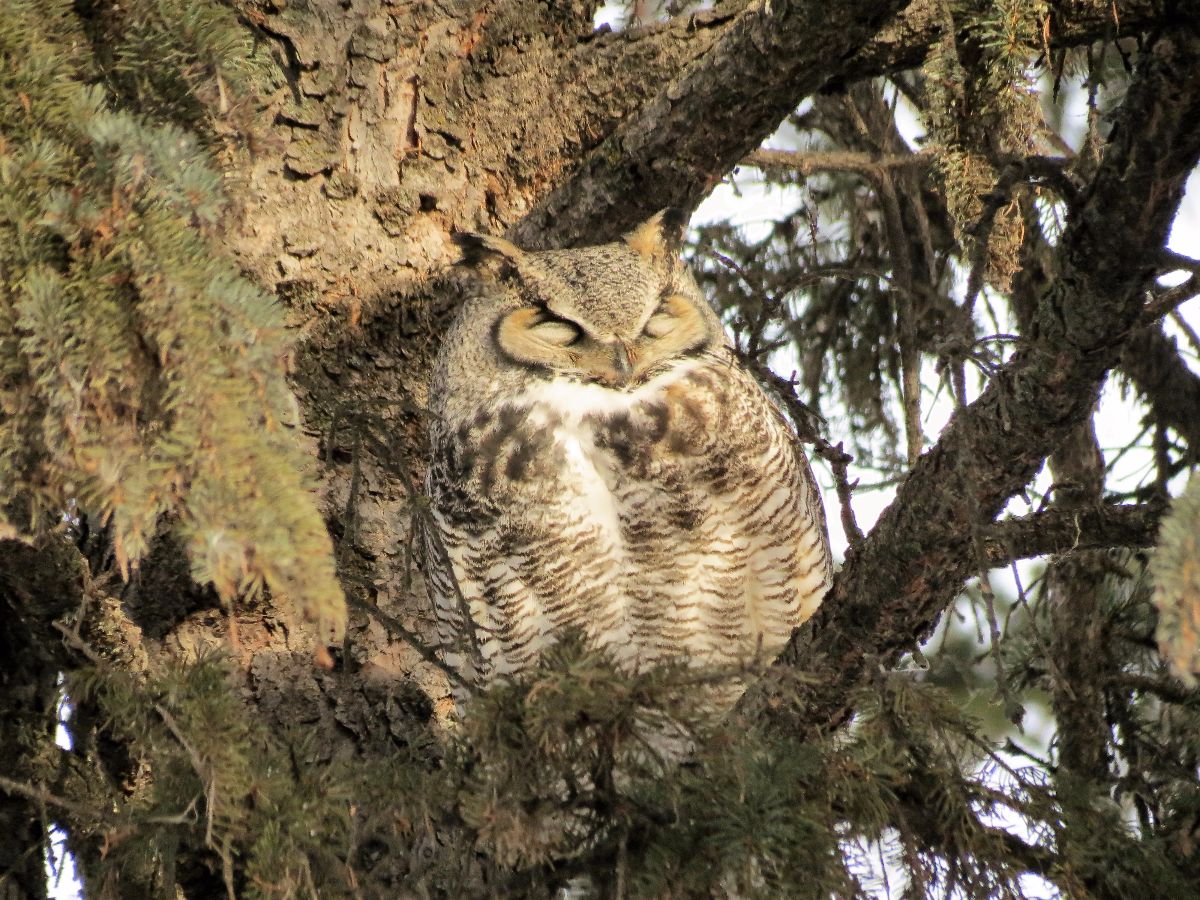
Since starting birding in the Calgary area in 1987, I have had the good fortune to be able to see many Great Horned Owls in my travels. As most people know, the Great Horned Owl is our provincial bird. It is widespread, but, local; common in some areas but not others. I get the impression the species is not as common as it used to be, but, we must remember, it is local. A check of this year’s Calgary area May Species Count data held annually the last weekend in May revealed that of a total of 31 Owls recorded, 18 were recorded in only 6 city territories. Leading the way was the Burnsmead east Fish Creek PP territory which had 6. Mallard Point Fish Creek PP, also along the Bow River, had 3. Baker Park in northwest Calgary had 4. These numbers mean that all the rural territories totaled only 13 birds with South of Strathmore leading with 4, and, the Carbon-Acme areas having 3 birds. That’s a total of 7 birds meaning all the other rural territories totaled only 6. Maybe it isn’t me and the species is not as common as it used to be, at least in rural areas. To be fair, numbers would have to compared against past years.
In the 1990s, and, even in the early stages of the new millennium, you could pretty well expect to drive out on the prairie east or southeast of Calgary and expect to see more than one Great Horned Owl perched on the top of a telephone pole, or, on the crossbars of a telephone pole in the fading light of the afternoon as they were preparing to launch themselves off to begin another night on the hunt. One such bird from those days was this bird I photographed along a road in the Blackie area.

This particular bird, quite dark brown, appears to be somewhat of a battle-scarred veteran with stubby eartufts, one of them flopped over, and a long scar stretching from one of the bird’s shoulders down one side of its breast. We can only speculate as to how the bird got that scar. These days, I have much more trouble just chancing upon a Horned Owl than I did in those days. I can recall one afternoon in that area when I observed 3 birds not all that far apart enacting that very scenario.
However, we must remember that the species is local. For instance, there was at least one pair that every winter roosted in the White Spruce trees against the back of the building on the north side of Sikome Lake in east Fish Creek Provincial Park in Calgary. Many people knew about them, and, the birds may have been amongst the world’s most photographed Great Horned Owls. At least 1 pair of the birds nests in the vicinity every year, sometimes in a tree cavity. Just down the road from Sikome Lake, one can walk the pathway between the Coniferous trees at the Fish Creek Park’s Visitor’s Centre, and also have a good chance of seeing at least one, if not more birds there. Long-eared Owls have also been found in these trees. Carburn Park on the other side of the Bow River from Fish Creek PP used to be a reliable site for finding Great Horned Owls, but, this year’s MSC numbers showed only 1 bird there. Refer to the opening paragraph for areas where the birds are most common, at least in May of this year.
In Great Horned Owls, as in all other Raptors, the female is larger than the male as is nicely illustrated by this pair photographed near Lake McGregor at Milo.
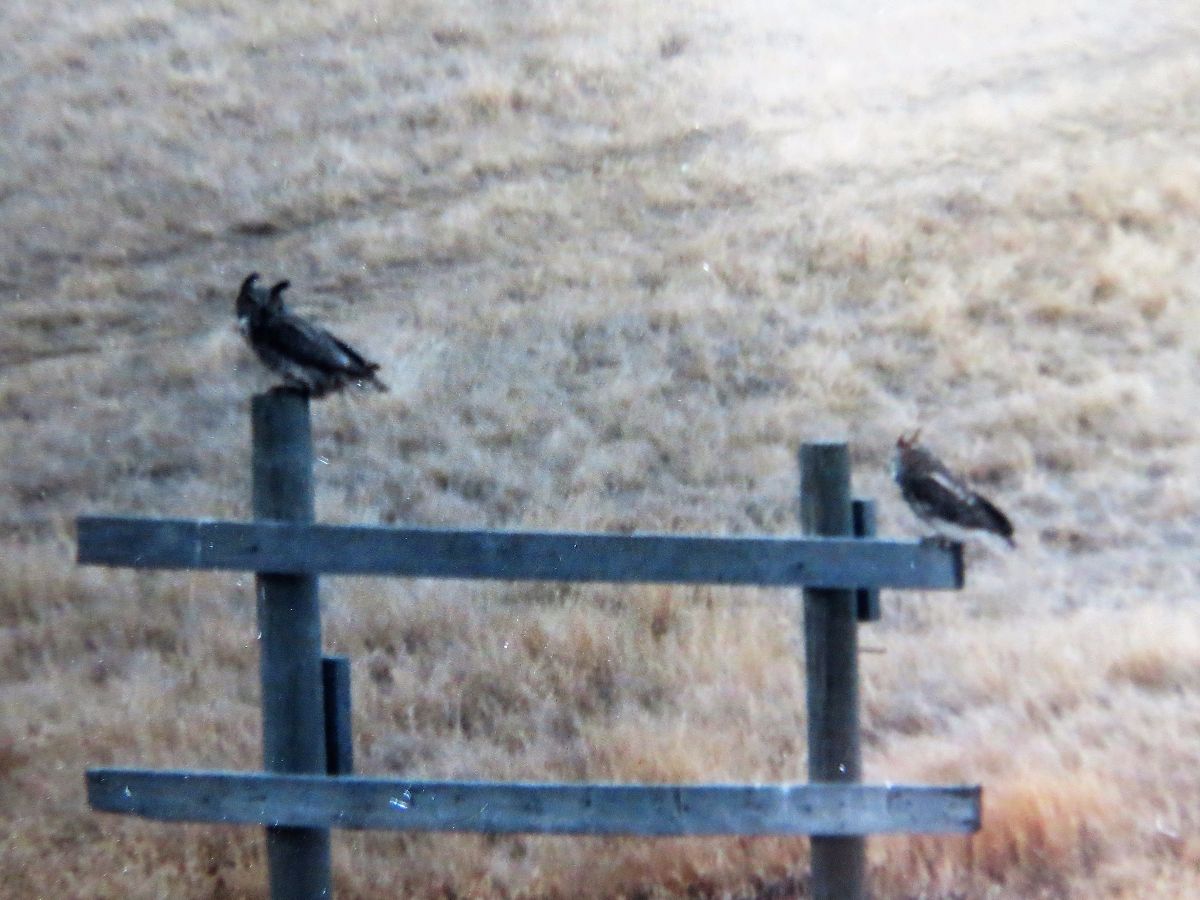
This partnership will soon lead to nesting –
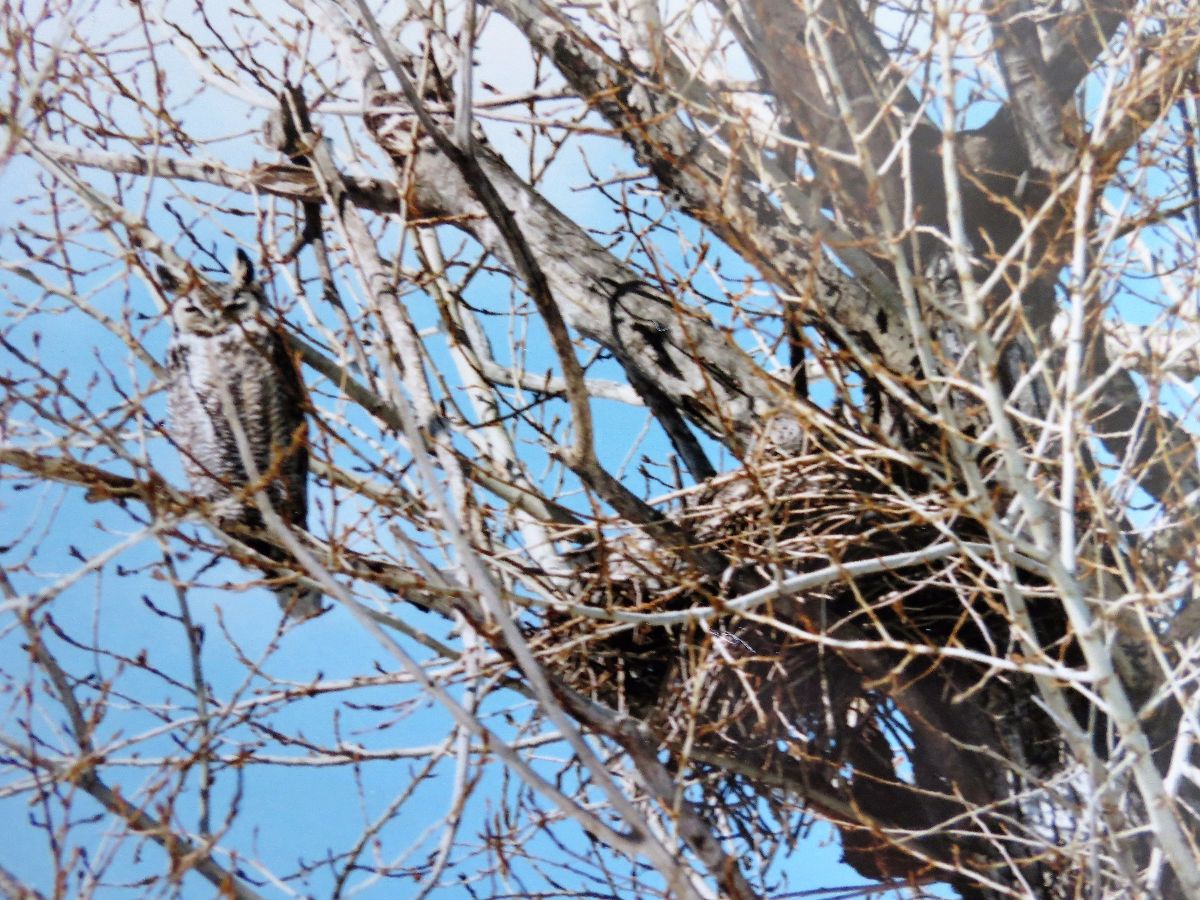
– as indicated by one of a pair perched beside the nest, which in this case, was along 146 Avenue near a farm in southeast Calgary before it became the Copperfield and New Brighton subdivisions. Nesting eventually leads to the production of young –

– such as this particular bird which was fledging from a nest near the creek in the Votier’s Flats area of Fish Creek PP. Mummy was down on a rock in the creek at the time hunting in the daytime to feed her youngsters. Once the young have fledged, they are officially Great Horned Owls.
In the immediate Calgary area, Great Horned Owls seem, in my experience, to be predominantly grayish birds such as this particular bird:

However, no 2 things in a species are perfectly alike, so, the degree of grayness and the arrangement of the bars, streaks, and other markings and colours produces no 2 identical individuals. Note the attractive contrast on this Owl between the white tail and the rest of the bird:
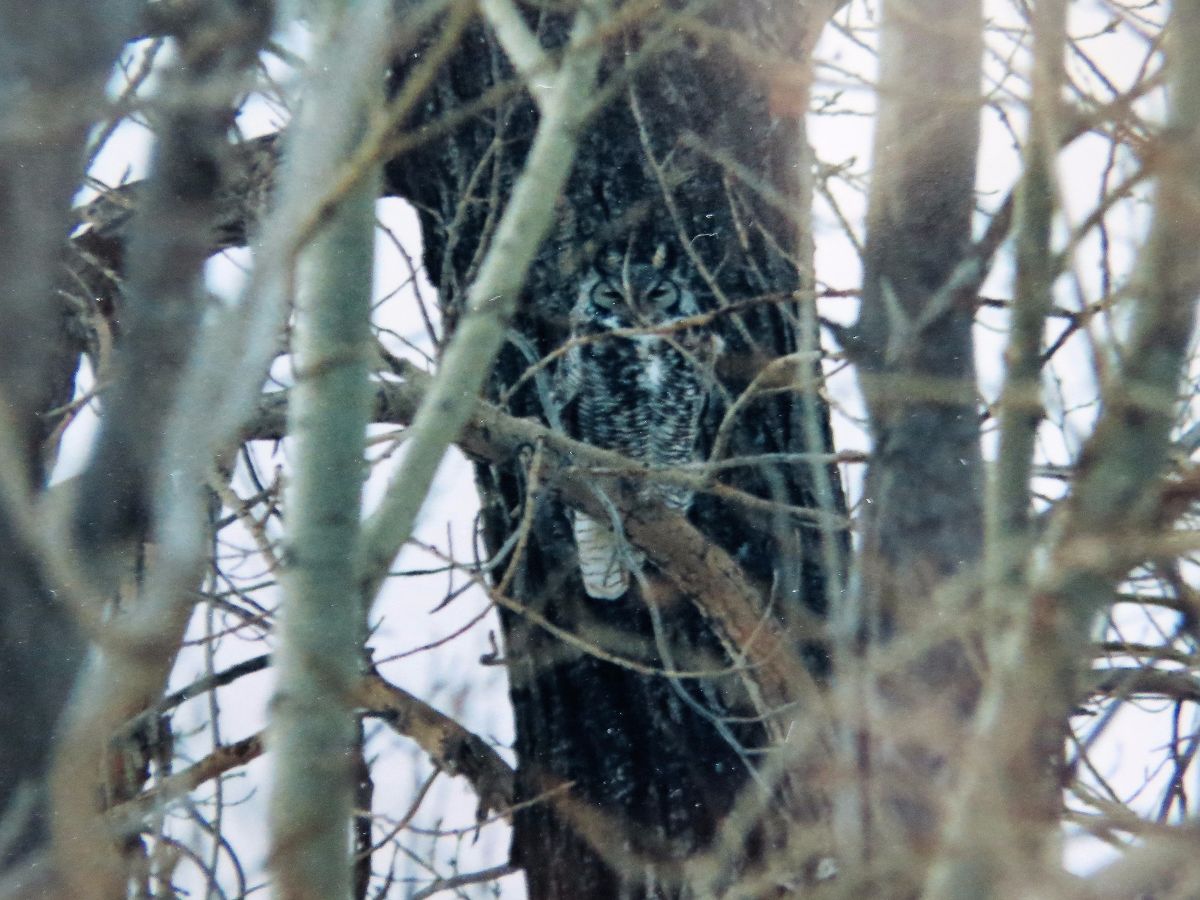
While some birds in the Calgary area can be somewhat darker or lighter; birds, in the foothills seem to be, in my experience, to be somewhat darker gray such as this individual:
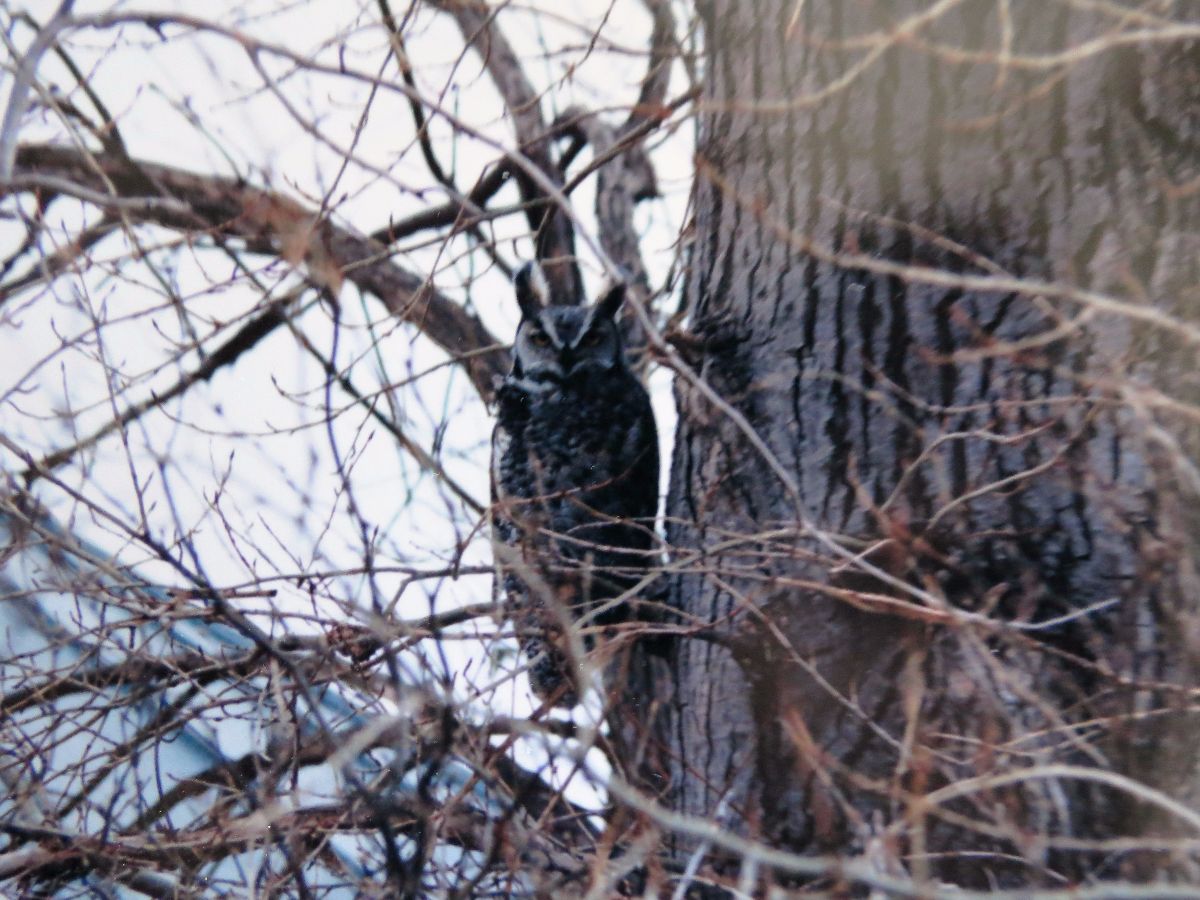
Remembering that no 2 snowflakes are exactly alike, look at this darker gray individual, but, look at the unusual blackish face.
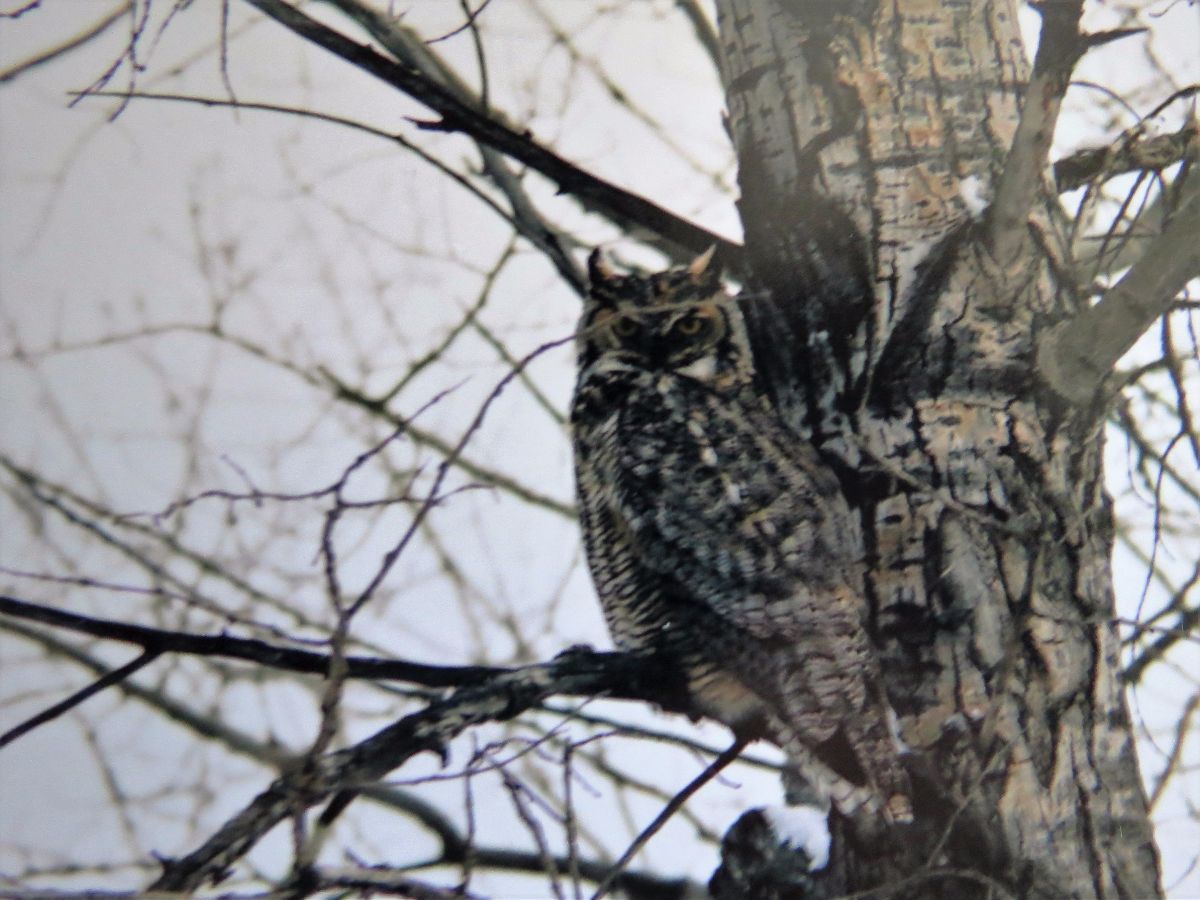
The city of Calgary sort of lies on the fringe area and some of the birds you see in the area may not be gray and white, but, may have some small degrees of brown, or, reddish-brown tinged feathers. Generally, the further east and south one goes from Calgary, the more liable one is to see birds with brownish, or, reddish-brown tinged feathers and, also, the browner the feathers may be. Look at the scarred veteran of the opening paragraphs and look at these 3 individuals, all photographed at sites east of Calgary:
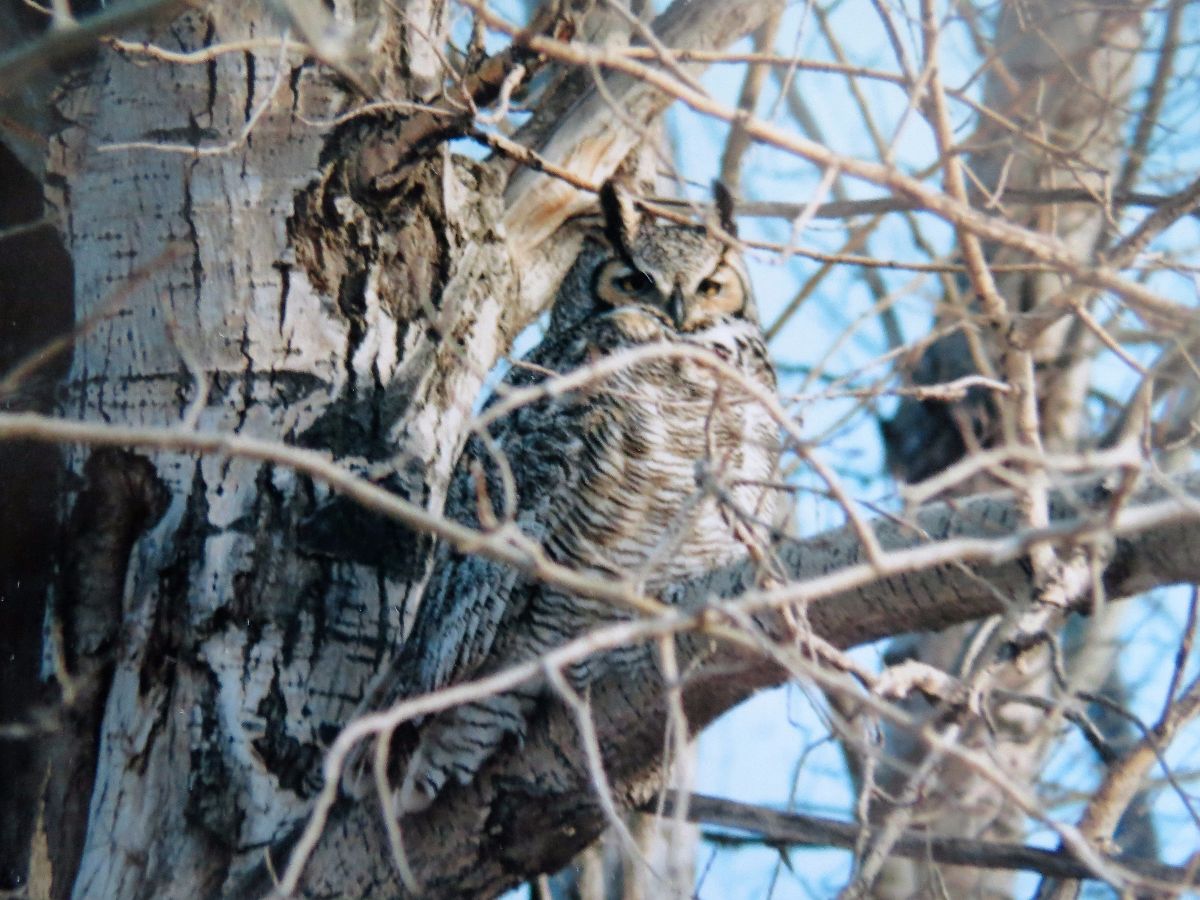
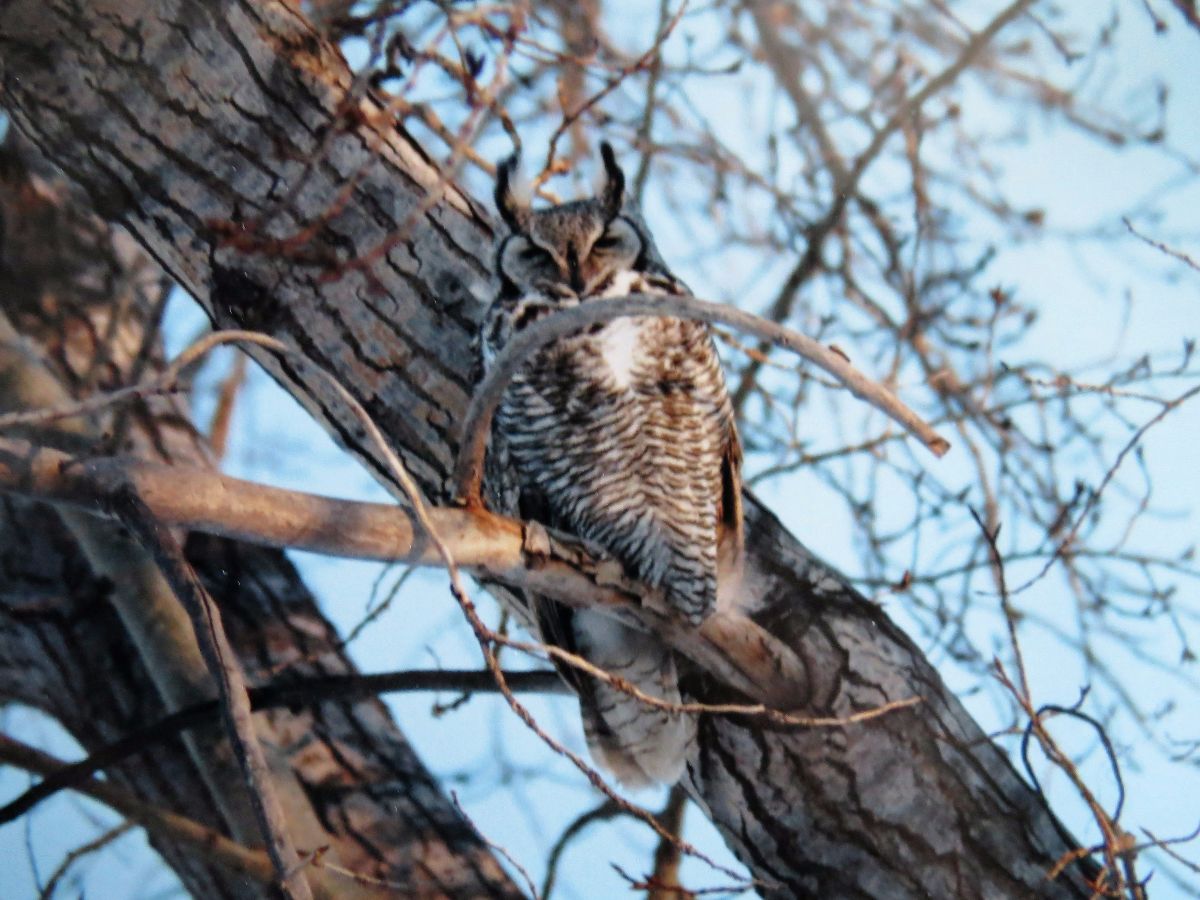
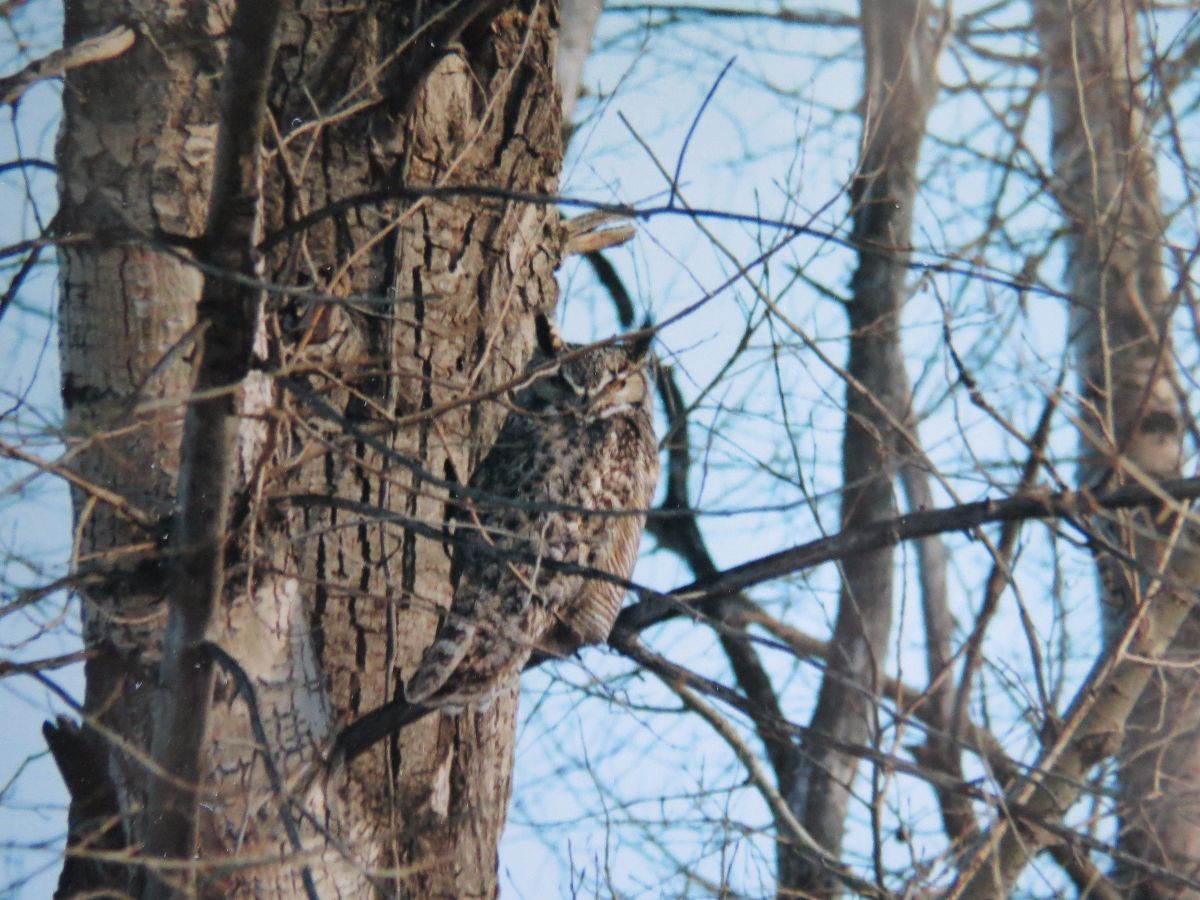
All these birds show varying degrees of brown and reddish-brown feathers.
But, it doesn’t end there. Aberrant plumages do occur. I photographed a leucistic Horned Owl once while guiding for a birder from Virginia in the United States, and, I have seen at least 2 individuals that were probably Subarcticus, or West Taiga subspecies birds being very, very pale gray and showing a lot of white. One bird was on the Calgary Christmas Bird Count along railroad tracks in open grassland on the eastern edge of the city, while the other was at a marsh in the hills south of Calgary during wintertime.
The moral is—- be on the lookout for a variety of Great Horned Owl plumages in our area.
—————————————————————————————————-
On the local birding scene, Fall shorebird migration thus far has been rather unspectacular, but it is early, with the “best” bird being a Ruddy Turnstone on a muddy spit seen from the viewing area at the south end of Weed Lake at Langdon. Lesser Yellowlegs have shown up so far in strong numbers. Migrating passerines detected on the move already include Yellow-rumped Warbler, Western Tanager, Swainson’s Thrush, Tennessee and Wilson’s Warblers. The report of up to 3 Purple Martins at the south end of Weed Lake recently is unusual as there are rarely reports away from the species’ local stronghold colony at Chestermere Lake. Caspian Terns are being reported with the most recent report coming from the Carseland Weir. Other recent reports have been from the north access of Langdon Reservoir and the south end of Weed Lake. There have been 2 reports of Grasshopper Sparrows from our area in July with one bird being seen south of the Mallard Point parking lot in east Fish Creek PP, and, the other bird photographed carrying food south of Keoma which is on Township Road 262 a short drive east of Highway 9. These birds are north of their range in the province. Recent rarities include a Northern Mockingbird near the Twin Valley Dam east of Parkland on July 13, and, a Great Crested Flycatcher in the Bearspaw region of northwest Calgary on July 12.
The city of Calgary Rare Bird Alert (RBA) number is 403-221-4519. If you have found a rare or unusual bird, noticed some unusual interesting bird behavior, noticed an unusually large number of individuals of a particular species of bird, or have seen a bird in the province out of season, by all means, report it.
Great article, I had no idea there is such variety of colour and pattern in the GHO! I wonder, did the count include the pair that lives in the river valley on the west side of Black Diamond?
Thanks, Bruno No, there were no Horned Owls recorded in that territory on the May Species Count.
Terry Korolyk
Christine Thank you for the beautiful comments, and, also thanks for the additional information. More info just makes us all happier.
Terry k.
We in Priddis have had GHO’s for many years, but this Spring an influx of crows nesting has caused them to relocate. Can only hope they’ll return soon! Loved your post…thanks!
hi terry i have read your page diane
Hi, Diane I hope you liked it. What did you think and thanks for the comment. We strive for input.
Terry K.
What a great article, Terry! I laughed at the comment about the owls near Sikome being the most photographed in the world. I think they have their own paparazzi. It has been quite a year at Fish Creek. I saw a total of 10 GHOs there this year. Of course, the pair near Sikome has 2 young this year — we just saw an adult with the two young this past Thursday. Earlier this year, we saw the pair near the entrance to Fish Creek just off Bow Bottom with their 4 young. What a year. Thank you again for the great article!